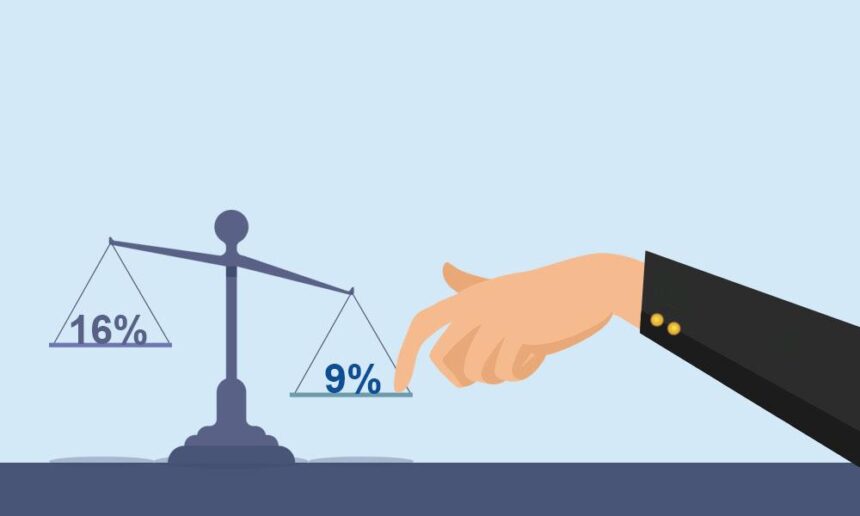In order to fulfil their election promises, the authorities are going to issue a resolution to set the interest rate to a single-digit number. Is it possible to contain the interest rate at nine percent, and what would be the consequences of such measure?
According to the Bank of Mongolia (BOM), in the first half of 2020, 12 commercial banks issued loans worth MNT 17 trillion, half of their total actives. Forty-six percent, or 14.5 trillion MNT, of total passives are savings, which is equal to 85 percent of the total loans. Today, the interest rate on commercial bank savings (weighted average) is 10.7 percent per annum and 16.3 percent on loans.
Bank issues:
- Most commercial banks are owned by 1-3 people. The owners’ names are undisclosed.
- Bank owners are taking advantage of all kinds of businesses, such as mining, railways, energy, construction, real estate, car sales, wool, cashmere, and fast food, to seize opportunities with cheap money and weaken free competition.
- The BOM is not able to fulfil its duty to inspect banks. The BOM rather reacts after an incident has occurred, as we say it in Mongolian “screaming after the lighting strike”.
- Despite the growth of state-owned companies both in numbers and value over the last years, making them a predominant feature of the economy, their operation is politically tied and not audited effectively. State-owned companies and government agencies conspire with bank owners through lobbying activities to place public funds as savings and their “masters” benefit from it.
- Large savings have become a tool for a few people to loansharking. The average savings is 10 billion MNT, interest rate is 14 percent, 116 million MNT per month and 1.4 billion MNT per year. No need to work.
- Public governance is poor, statesmen become billionaires, and corruption is not fought back and damages to public funds do not get compensated.
- Due to high-interest rates, all business enterprises are on the brink of collapse and unemployed people are fleeing abroad.
Loan Sharking
Loans are not only issued by commercial banks. In Mongolia, 12 commercial banks, 540 NBFIs (total loans of 1.4 trillion MNT), hundreds of pawnshops, and individuals provide loans.
As global trade has grown, the need for loans has increased dramatically, and loansharking (lending money at an interest rate that exceeds the allowable legal limit) has been occurring ever since. In 1545, Britain set limits to an extremely high-interest rate. All US states have anti-loansharking laws. In Alabama, for example, the law provides for an officially agreed on paper interest rate of 8 percent per annum and no more than 6 percent per annum, if not agreed on paper. In the event of a dispute, the overpaid interest is refunded to the borrower. In Japan, people who could not pay their loans committed suicide. There is a law that any loan of up to 100,000 yen should not exceed 20 percent per annum, 18 percent up to million, and 15 percent over million. If the borrower agrees, the interest rate will not exceed 29.5 percent for the consumer loan. In South Korea, the maximum interest rate is 27.9 percent. According to the World Bank, anti loansharking laws exist in 76 countries.
In the United States, anti loansharking laws have supported demand by restricting interest rates on consumers, mortgages, and car loans. In addition, lenders with low competitiveness and productivity (all banks and financial institutions) were pushed out of the market. Hence, low interest rates made it difficult to establish a new bank.
In Mongolia, the interest rate for commercial banks is 20+ percent per annum, for NBFIs 30+ percent, for pawnshops 60+ percent, and for day lenders 80+ percent. If the banks’ interest rates do not exceed 12 percent per annum, NBFIs will be within 20 percent, pawnshops and others within 30 percent, and the exact number will be determined by the loan amount.
While setting interest rate caps by law has largely stopped loansharking, it is believed that it limits the free competition through its non-market-based intervention. It reduces the availability of loan and causes many issues for the borrowers that it intends to help. Lenders raise real interest rates by increasing down payments and non-loan service fees. As a result, low-income, high-risk borrowers have less access to bank loans.
Commercial banks of Mongolia
The following table shows how banks set their interest rates now and how they can reduce them in the future.
* According to the BOM regulations, commercial banks draw 8.5% of their all collected capital in national currency tugriks and 15.0% of their foreign currency by form of mandatory reserves in the BOM’s current account without interest.
** Banks add their profit margins when setting the base interest rate on loans in order to earn a profit equal to one percent of their actives.
*** If the maximum interest rate of a bank savings is 8 percent, it is necessary to reduce other variables affecting the loan interest rates. The loan interest rate will be 1 percent per month and 12 percent per annum.
Banks need to cut down on inefficient spending and go digital to reduce their operating costs. They need to share ATMs and POS machines, expand e-banking service and close unprofitable branches. Bad loans need to be recouped from the contingency fund, non-performing assets need to be removed from the bank’s balance sheet and transferred to a specially regulated management company. The BOM’s mandatory reserve ratio should be set at 3 percent in accordance with international standards, both in tugriks and foreign currencies, to allow more money to be supplied to the market. Also, banks should merge, and commercial banks in general should become open and joint stock companies.
The money of the state and state-owned companies could be accumulated in the BOM interest-free, converted into bonds and lent to commercial banks at low interest rates, thereby reducing the cost of resources. Banks can be required to lend this money to the target group. In general, if all state-owned companies become open and joint-stock companies, they will be under control and have no chance to steal.
Along with or without restrictions on loan interest rates, the BOM needs to improve banking inspection, repay bad loans with the owners’ money, increase its own capital immediately, and maintain quality financial balances.
All borrowers must be covered by resolution on reducing loan interest rate. In general, such restrictions may lead to structural changes in the banking sector in the medium term and encourage banks to merge and sell. However, the authorities should be aware that in the long run it will reduce access to loan and restrict free competition.
2020.08.05
Trans. by Riya.T and Sungerel.U












